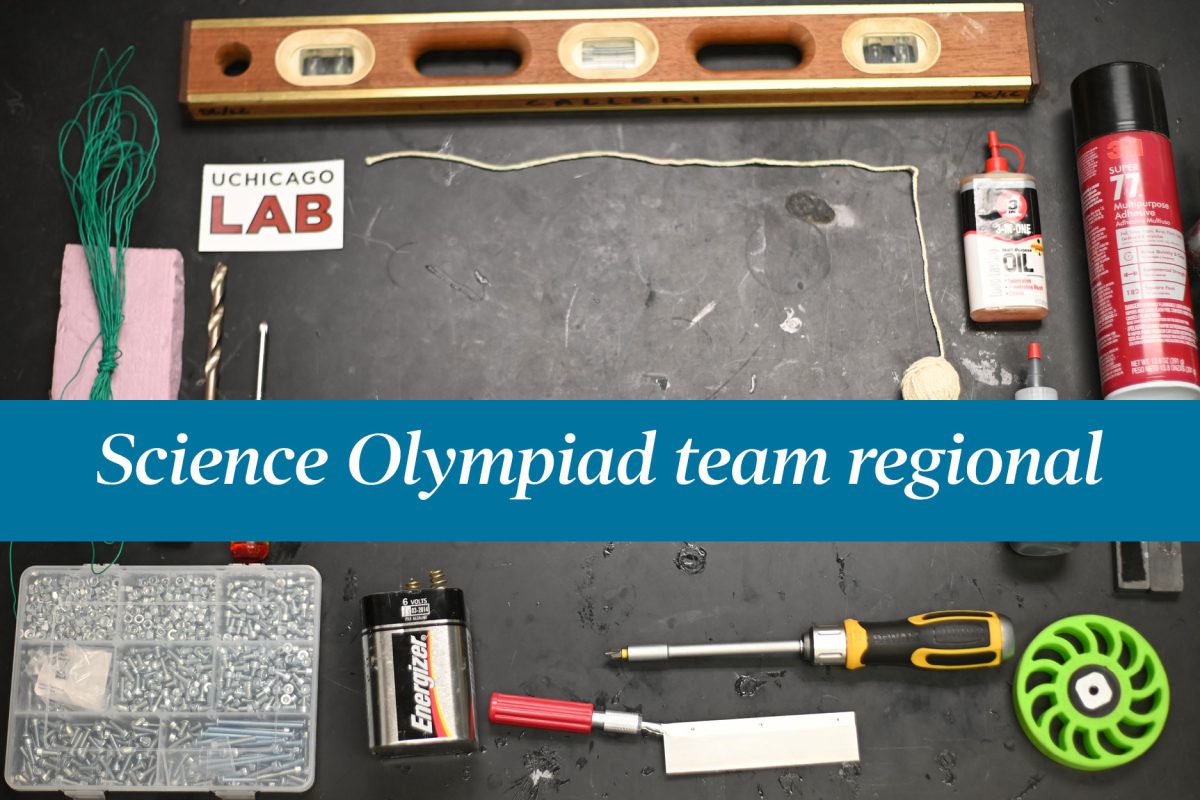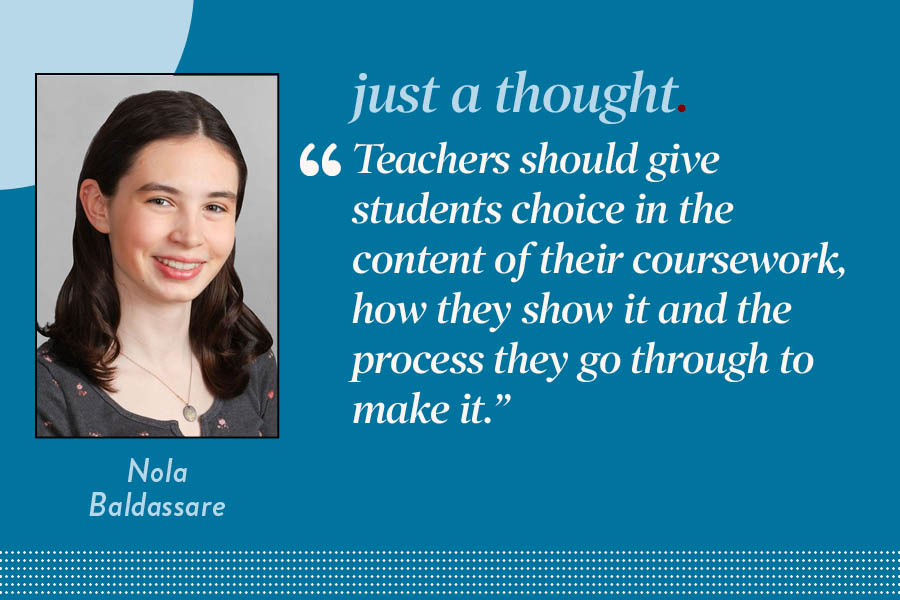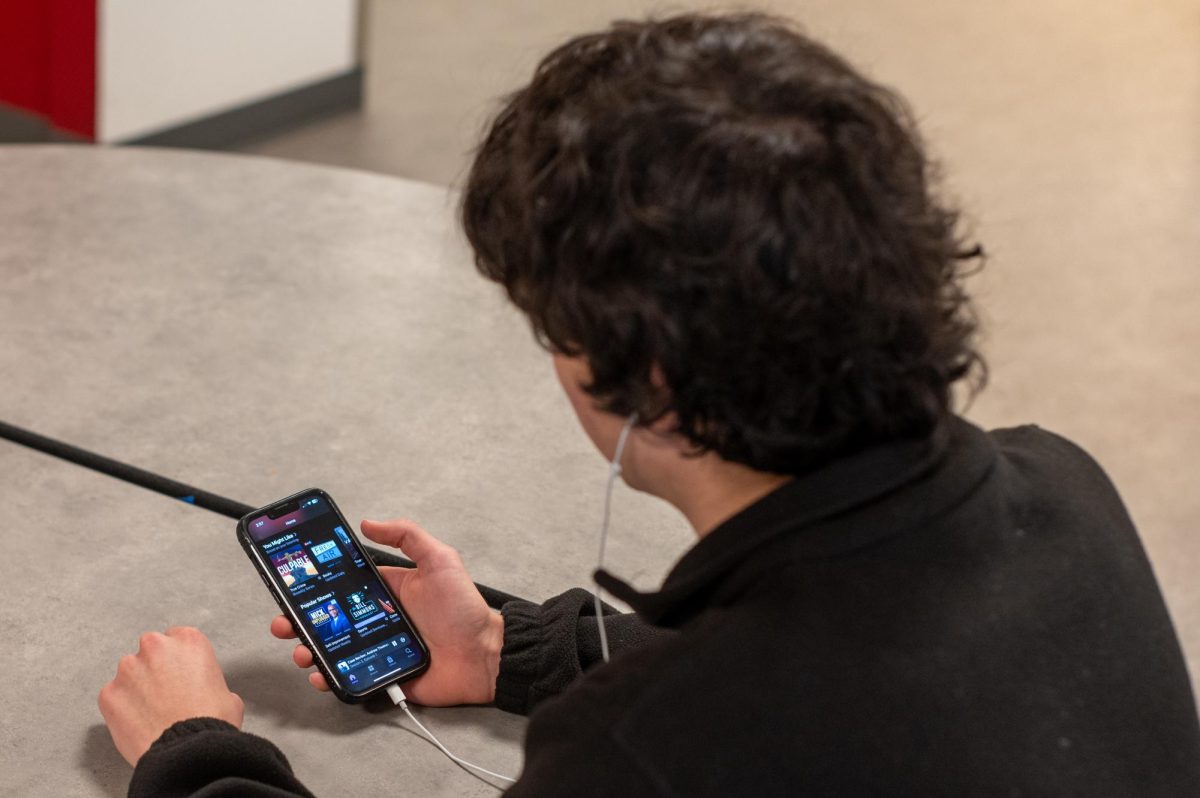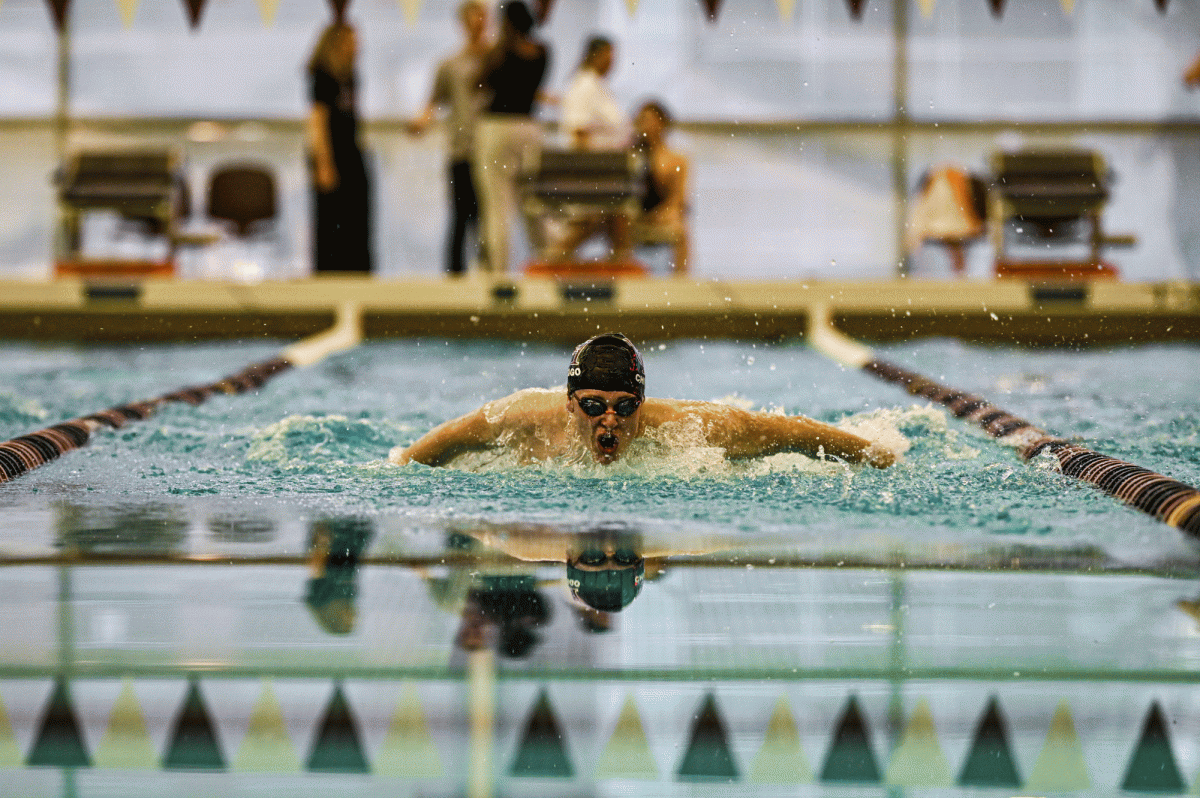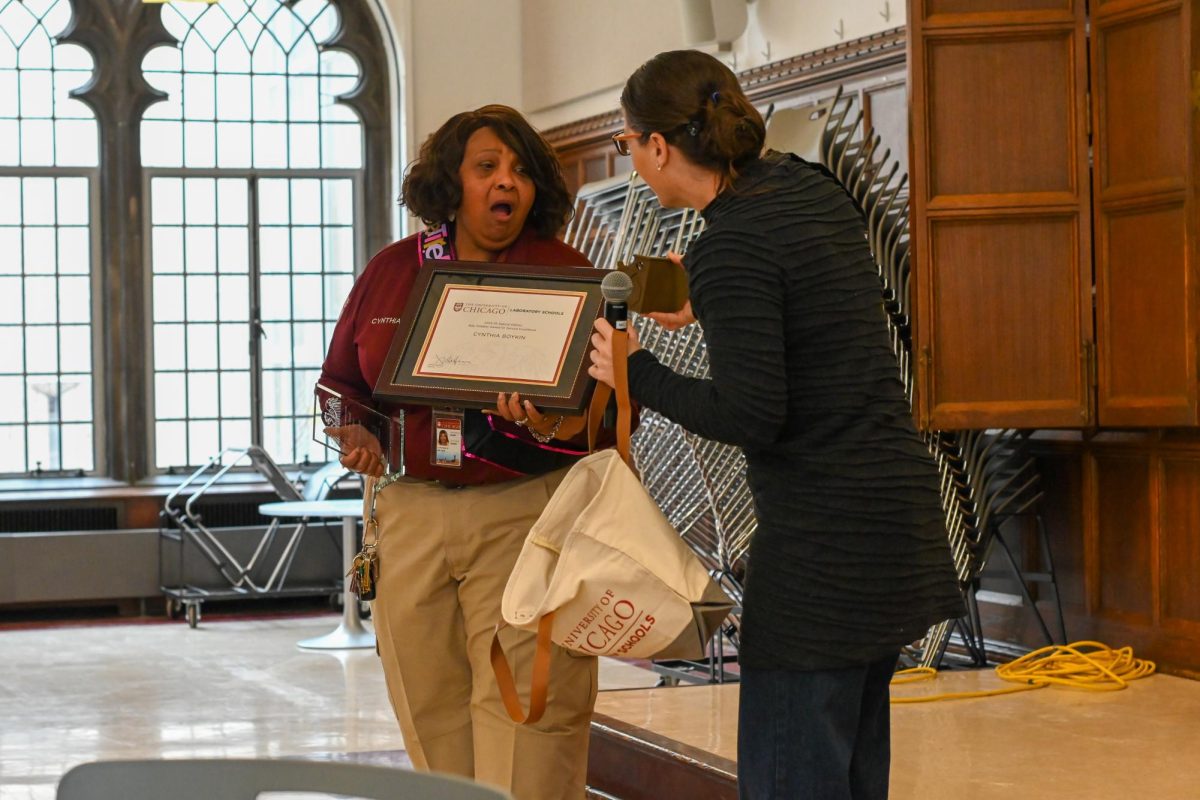In schools where band teacher Ryan Hudec previously taught, he would sometimes find himself in charge of a room of over 100 young musicians at one time. It was not until he came for a job interview at Lab where he witnessed something unique.
“I saw one person teaching up front, as usual,” Mr. Hudec said, “but there was also someone fixing an instrument, and another teacher was helping a student one-on-one in the corner. And that was the biggest draw for me as a music educator.”
The practical reason for a co-teaching system, where more than one teacher leads a class, in Lab’s music department is due to a specific ratio limiting how many students can be in a class with just one teacher. However, the benefits of co-teaching practices are exemplified in Lab’s music classes, as music faculty create strong engagement and introduce students to numerous perspectives.
Co-teaching gives teachers the flexibility to divide large classes into smaller groups to be worked with separately. Rozalyn Torto, who co-teaches orchestra alongside Cody Boukather, said this ensures closer attention is given to individual students.
“The co-teaching system allows us to reach everyone,” Ms. Torto said. “So the more work that we can do together to develop your technique, your musicianship, your confidence and your enjoyment of playing, the better we can have a close relationship with a student.”
Hsing-Huei Huang, who co-teaches choir with Katy Sinclair, said co-teaching allows for enriched student connections, something she did not experience when she was a student.
“I was one of those choir members that disappeared in the back,” Ms. Huang said, “because I didn’t know whether I was good enough or whether I was being seen or whether or not this was the right thing for me to be doing. In the way we co-teach, every student gets a chance to feel seen in a small group. That is probably one of those unique relationships that the system is able to give us.”
Choir student Camila Bravo, a sophomore, said she feels this part of the practice impacts her.
“I like being able to get to know both teachers this way,” Camila said, “because we either spend time with them in groups of five to six or as a whole class, and it really makes the students and teachers closer.”
Co-teaching also allows students to learn music through the lenses of several teachers. Ms. Torto said this diversifies their range of experience.
“If the only experience someone had with music education was with me, and they were not engaged by my methods, then in their minds, music equals Ms. Torto,” Ms. Torto said. “But that is just so far from the truth.”
Orchestra student Aiden Yu, a ninth grader, said this aspect of the co-teaching system provides him with a more comprehensive learning experience from different perspectives.
Aiden said, “I believe this is crucial, especially to music, because music has a variety of interpretations, and having different opinions on the music helps me visualize and formulate my own interpretations.”
A massive amount of work goes on behind the scenes planning co-teaching partnerships. Mr. Hudec, Ms. Torto and Ms. Huang all said co-teaching requires taking time to plan ahead, whether it be the smallest details or biggest considerations. Co-teachers held a Feb. 7 retreat to discuss philosophies at the Joseph Regenstein Library at the University of Chicago.
Ms. Torto commits to ensuring she is on the same page as Mr. Boukather. Ms. Torto said unique considerations need to be made when collaborating with other teachers, but the product of such work can have twice the beauty, just like a musical duet.
“We co-teach the orchestra class with two people. I compare it to making music together,” Ms. Torto said. “Just like how you would want your tone and style to blend, and how you would want the notes and the rhythm of your teaching to align with the others. We all have teaching techniques, but it’s like, ‘How can I complement what they’re doing?’ ‘How can I support them?’ It comes down to being a team player, and building trust with your co-teacher.”






